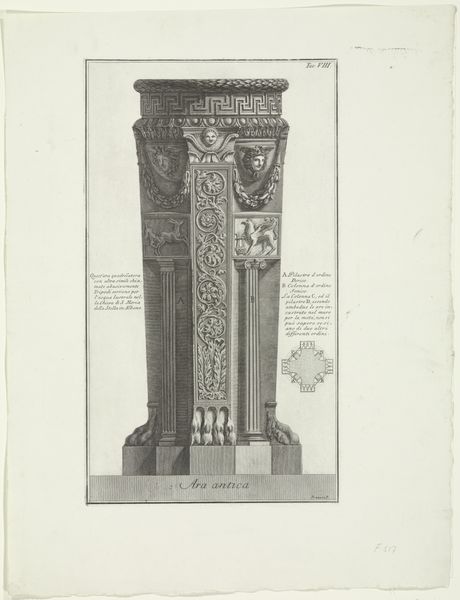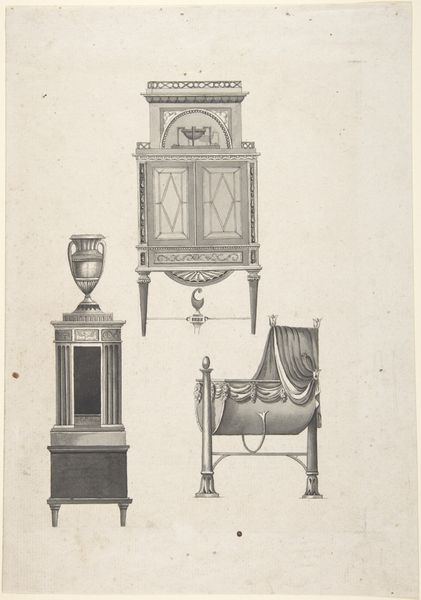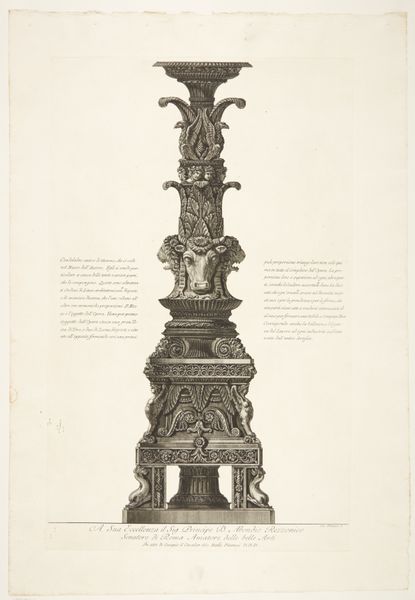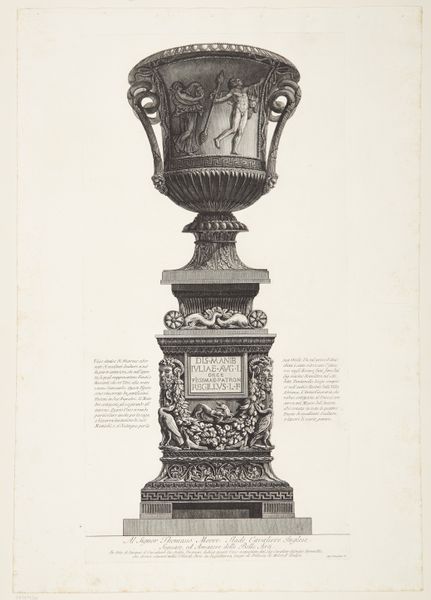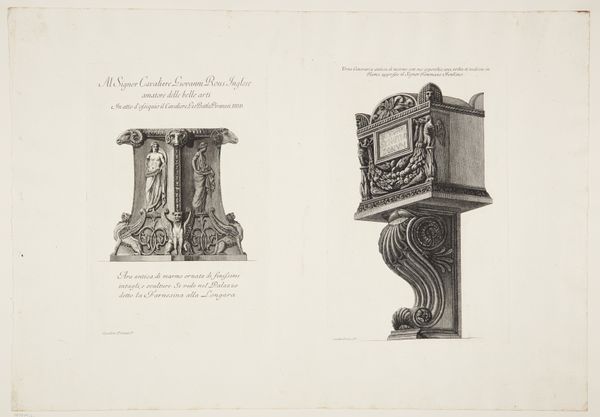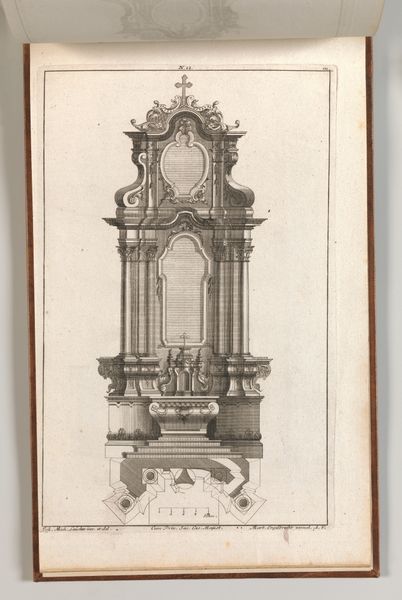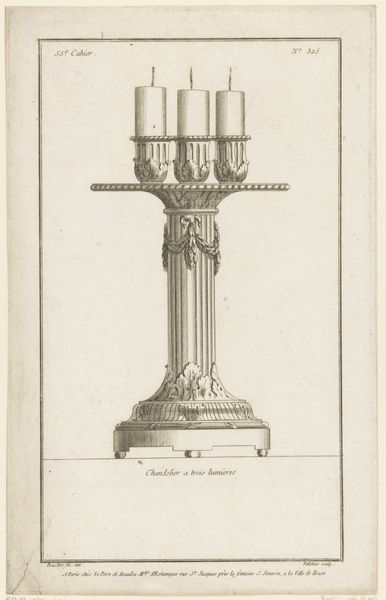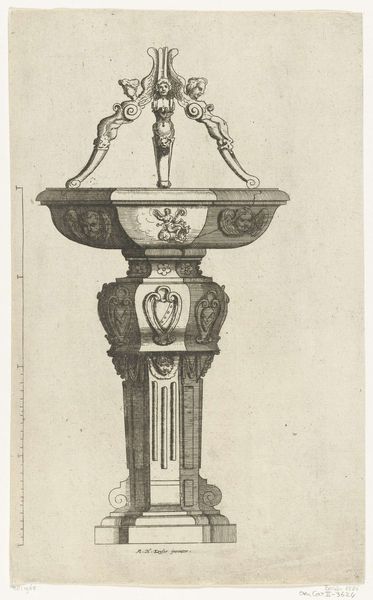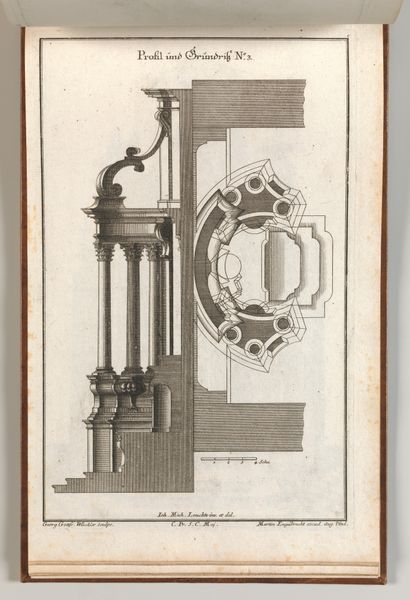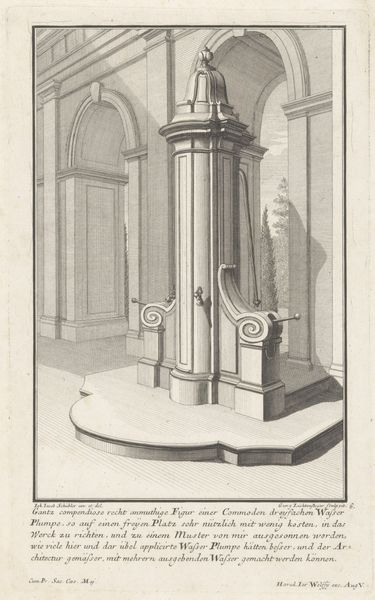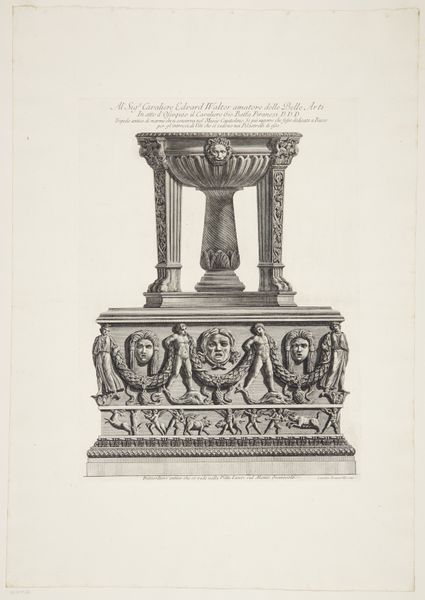
One of two identical altars dedicated to Apollo with Greek key motif around the rim and Medusa heads on the bowl, found in the Villa of Pompey the Great in Albano 1769 - 1778
0:00
0:00
drawing, print, etching, engraving, architecture
#
drawing
#
neoclassicism
# print
#
etching
#
roman-art
#
history-painting
#
engraving
#
architecture
Dimensions: 670 mm (height) x 420 mm (width) (plademaal)
Curator: Looking at this, I can’t help but feel transported – it's so evocative. Is that silly? Editor: Not at all! And perfect timing, as we are about to explore a work by Giovanni Battista Piranesi titled "One of two identical altars dedicated to Apollo with Greek key motif around the rim and Medusa heads on the bowl, found in the Villa of Pompey the Great in Albano," created between 1769 and 1778. What we have here is a print, using etching and engraving techniques to depict architecture and what it suggests. Curator: Apollo and Medusa... that's quite the combo. The precise, almost mechanical lines emphasize the altar's design, its physicality. It’s almost like Piranesi is giving us a blueprint. You can almost see the artisan at work. Editor: Exactly. It really draws our attention to the production – the physical labor, the skilled hand. How this idealized ancient object becomes accessible, reproduced through labor. Curator: And there’s this looming sense of history, not just the grandeur of Rome, but the layering of interpretations. The Greeks, then the Romans, then Piranesi's rendering… all informing each other across time and materials. Does this resonate for you? I mean, the historical depth charged me. Editor: Definitely. Each repetition reinforces not only the grandeur but also the economic systems necessary to support such extensive artistic undertakings. Reproduction of this kind turns classical form into a commodity. This work is located here in SMK – Statens Museum for Kunst today and this drawing of it by Piranesi highlights the altar as an object of cultural and material exchange. Curator: In the end, that's where the art lives, right? This echo through history is something we can feel today when looking at a picture. Piranesi knew how to make this tangible for his audience. Editor: Precisely, it reveals the ways in which the making and meaning of things change through time. It invites us to reconsider our connection to classical history.
Comments
No comments
Be the first to comment and join the conversation on the ultimate creative platform.

